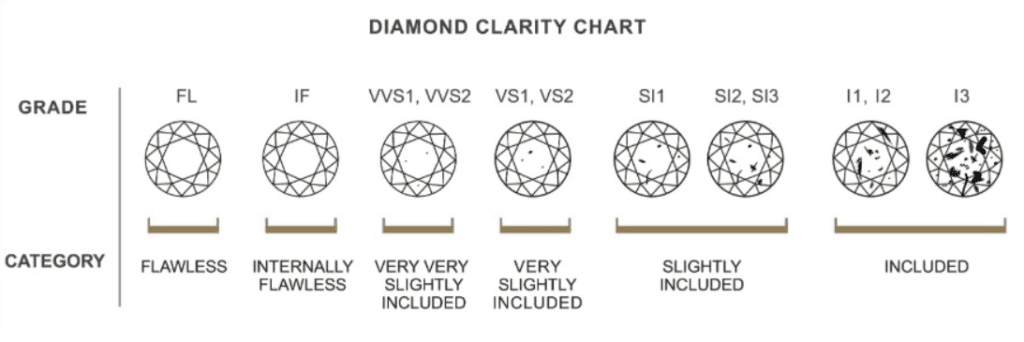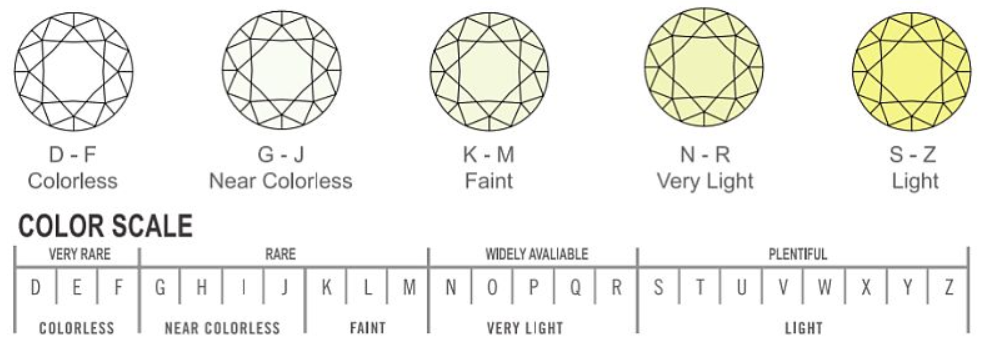Introduction
Welcome to our new series on diamonds. Today's topic is a guide to finding the perfect diamond for you. Before we get into selecting the perfect diamond for you, we have to begin at understanding the diamond grading system. If you are new to the blog, follow us on our Facebook or Instagram if you like our guides.
Grading System (Carat Weight)
The first aspect of a diamond is the carat weight. What is "carat weight"? The (GIA) defines the carat weight of 1 carat as 200 milligrams or 100 points. The standard for measurement allows for the precision of up to one-hundredth decimal. The carat weight is one of several factors affecting the price of a diamond.
Clarity
The term "clarity" in the diamond world refers to the absence of inclusions. For simplicity of understanding, the fewer inclusions present in a diamond, the better the clarity. Here are a few key terms for clarity grading: -
a) Flawless (FL) - Practically no inclusions even under a 10x magnification scope. These are the highest clarity grade of diamonds one can purchase or acquire. Prices for flawless diamonds are costly as they are rare.
b)Very Very Slight Inclusions (VVS 1): - There are small inclusions present in VVS 1 diamonds. These diamonds are generally scarce and slightly cleaner (in terms of inclusions) than VVS2 grades. Similar to the flawless quality, jeweller's will find extreme difficulty identifying inclusions using a 10x magnification scope.
c) Very Slight Inclusions (VS1): - Diamond inclusions under the VS 1 grade are generally very difficult to spot with the naked eye. However, under magnification with decent lighting, a jeweller can identify the inclusions.
d) Slight Inclusions (SI): - Slight inclusions are usually visible in diamonds that weigh 0.25 carat and above. These inclusions are visible to the naked eye. Most jewellers will hide these inclusions by the claws that hold the diamond in place either on a ring, necklace, bracelet or any form of jewellery. The highlight of SI or SI2 is that they often present the best value for money.
e) Inclusions (I): - Diamonds under this grade have easily visible inclusions. Small diamonds that have a carat weight of 0.15 and below have less visible flaws. A piece of advice given to individuals interested in I diamonds is to choose one that has a colour not too dark or look like sugar crystals.
Diamond Clarity Chart

Source: (GIA) Gemology Institute America
Colour
The colour aspect of a diamond gives us that initial impression of a diamond. What we mean by that is the colour of it. When we determine the quality of a diamond in terms of colour, it refers to the absence of colour tint or hue. A simple rule to abide by is that the more colourless a diamond is, the better the colour grade.
The GIA uses a colour grading system to determine the quality of a diamond. The grading system scale begins from D (being the best/colourless) to Z (worst/noticeable tint). However, colour tints are generally very subtle; trained diamond experts can usually tell the difference. The size of the diamond also plays a role in determining the colour; the smaller the diamond, the more challenging detection of colour tints become.
Colour Grading Chart

Source: (GIA) Gemology Institute of America
Cut
Finally, the aspect of a diamond that makes us go: "Damn, that is one shiny diamond". The "cut" of a diamond will affect how well they shine or sparkle. Many appraisers spend time evaluating the cut of a diamond because it plays a significant role in affecting value.
The cut of a diamond is by far the most challenging factor of a diamond for an expert to evaluate. Gemologists assess several factors: -
a) Brightness: - External and internal light reflection
b) Fire: - The way a stone scatters white light into all colours of the rainbow
c) Scintillation: - Sparkle and patterns of light and dark caused by reflections within the diamond
Check out Jewellery Collection
Weekly Investment Series Guide
Checkout our blog weekly or subscribe to our newsletter for the latest Diamond Investment Guides
